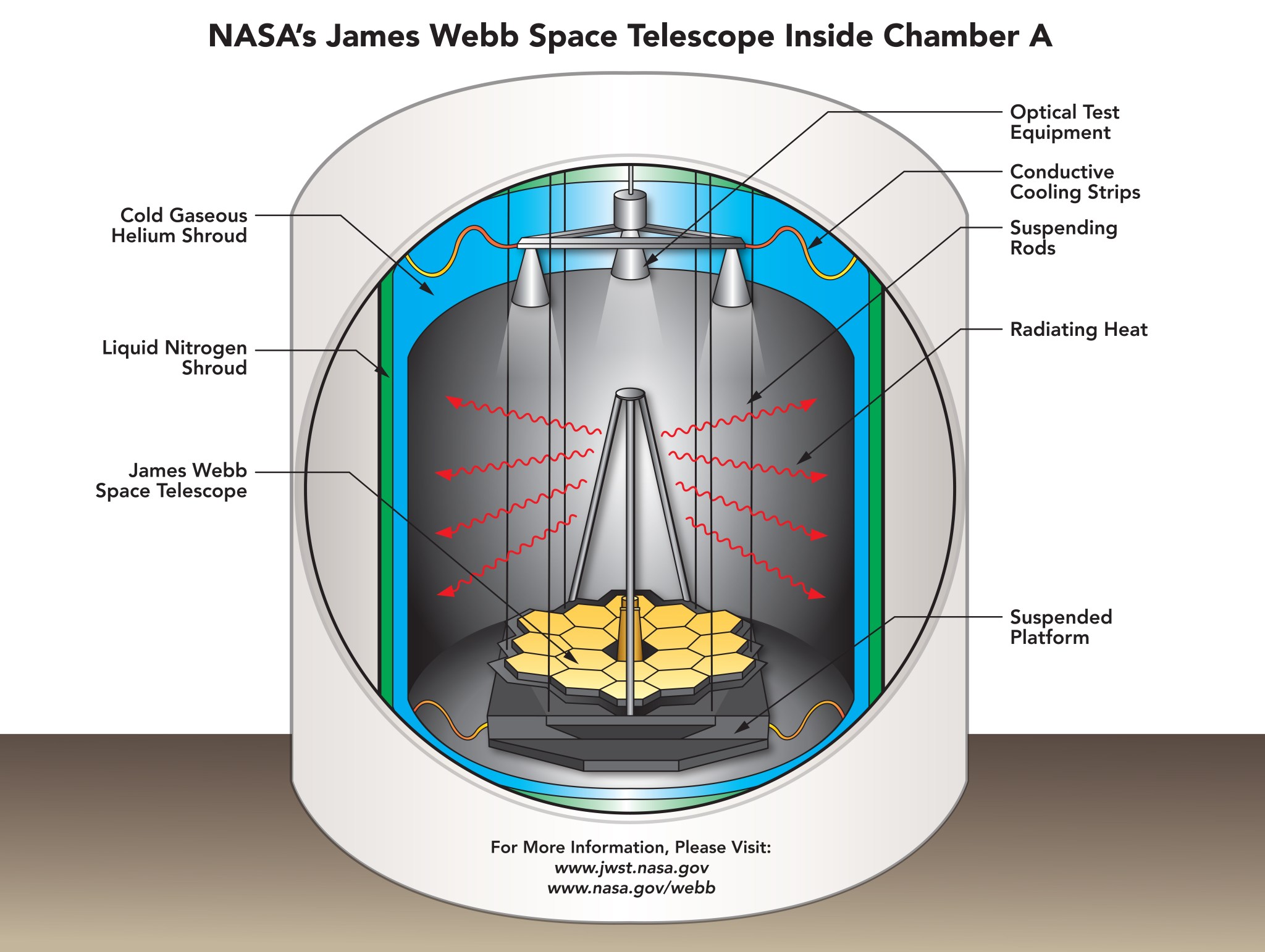Objects in a vacuum, like the Webb telescope inside of Chamber A, primarily cool through a heat-transfer process called radiation. For an object to radiatively cool, it must be in view of another, colder object. The heat from the warmer object (the telescope) transfers to the colder object (the surrounding shrouds) without the need of a medium (such as air).
Chamber A’s two shrouds are nested “Russian doll style” with the telescope, explained Paul Geithner, deputy project manager – technical for Webb. Within the chamber sits the liquid nitrogen shroud, within that shroud sits the cold gaseous helium shroud, and within the helium shroud sits the smallest nesting doll, the Webb telescope.
Liquid nitrogen and cold gaseous helium are considered cryogens, or substances capable of producing extremely low temperatures. Just how low? Liquid nitrogen can get as cold as 77 Kelvin (minus 321 degrees Fahrenheit/minus 196 degrees Celsius), while the cold gaseous helium in the shroud gets as frigid as 11 Kelvin (minus 440 Fahrenheit/minus 262 Celsius).
Radiation is one of the three main types of heat transfer, the others being conduction and convection. Conduction is the movement of heat through adjoining objects, directly from one particle to another. It is the reason a ceramic mug gets uncomfortably hot after you pour near-boiling coffee into it.
In Chamber A, engineers used “thermal straps” to physically connect the platform on which Webb is suspended to the cold gaseous helium shroud. The Webb telescope is thermally insulated from the platform, so the platform does not transfer heat to the telescope.
The optical test equipment at the top of the chamber uses a mixture of radiative and conductive cooling. The equipment radiatively passes its heat to cooling panels, which then pass their heat conductively (via thermal straps) to the cold gaseous helium shroud. For simplicity, the diagram shows the optical equipment attached directly to the shroud.
The test equipment in the chamber governs how quickly the telescope can cool; Webb can tolerate much faster cooldown and warmup than the equipment. Every item inside the chamber must be kept as cold as the telescope; otherwise, they will prevent the telescope from cooling the required amount.
Lastly, convection relies on the movement of fluids, such as molecules of air or water. As these molecules heat, they rise, and as they cool, they fall, which creates a natural circulation that can heat or chill an object or area. Because there is no longer any air (or any other fluid medium) in Chamber A, there is no convection. That’s also one of the (many) reasons why you cannot just strap a giant air conditioner onto Chamber A’s door.
Be sure to check out the Webbcam to see the current temperature of the chamber, compared to the current temperature of Houston.
For more information about the Webb telescope visit: www.jwst.nasa.gov or www.nasa.gov/webb
Eric Villard
NASA Goddard Space Flight Center






























